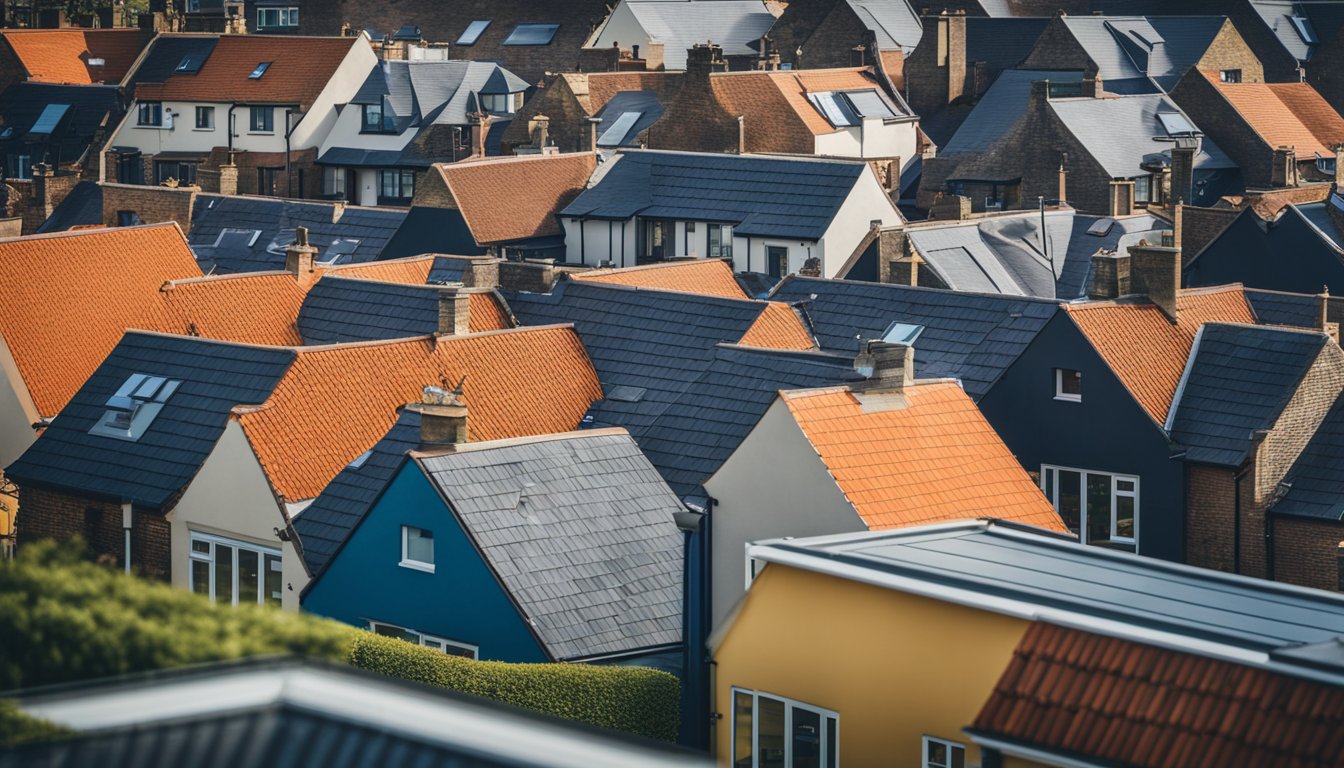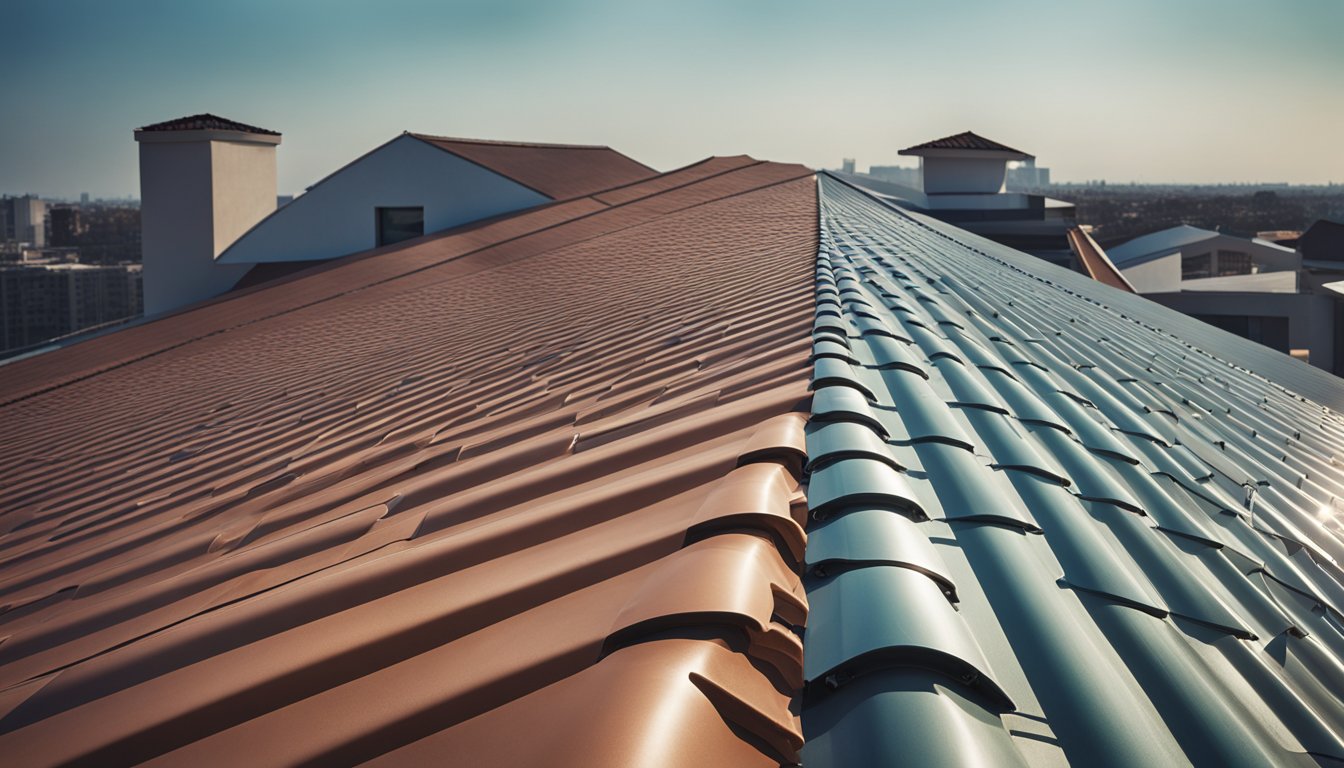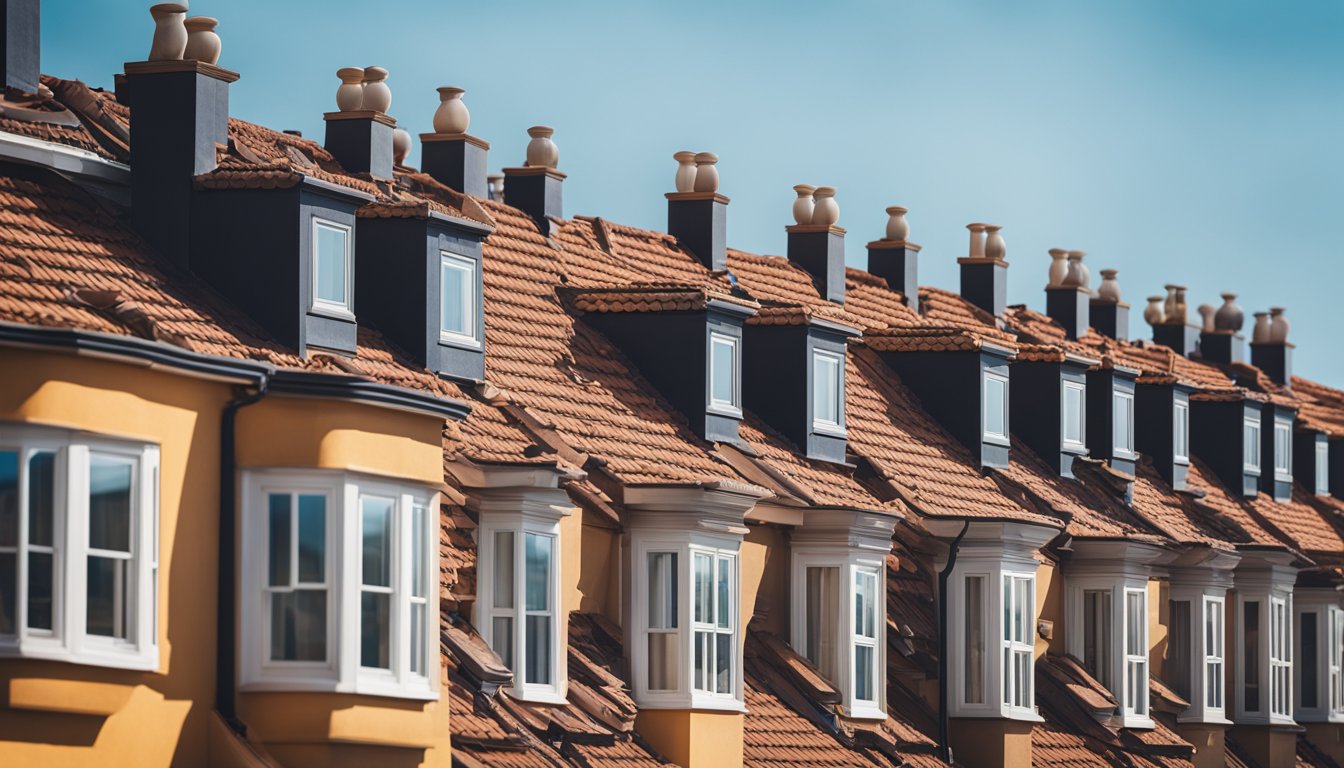Late updated: 12 Nov 2024 13:11
Written by: Oliver Bennett
Exploring Colourful Roofing Options For UK Homes: A Guide to Vibrant Choices
Exploring colourful roofing options for UK homes opens up exciting possibilities not just for enhancing curb appeal, but also for adding personality and value to our properties. Today, roofing materials come in a variety of hues, enabling homeowners to match their roofs with the architectural style of their homes or make a bold statement. Colours don't just transform appearance; they can also improve energy efficiency and reduce environmental impact.

We see a growing interest in vibrant and diverse tones when it comes to roofing, including classic shades into more innovative and sustainable materials. More homeowners are looking into options that offer durability and performance, while also embracing environmental consciousness. Our goal is to guide you through these options, helping you make an informed decision for your home.
With the variety of choices available, it's crucial to compare the options for suitability in the UK climate. Each roofing colour and material brings its unique advantages, whether you're considering slate's timeless appeal or exploring vibrant new hues in eco-friendly materials. As we journey through these, let's discover how colour can transform the homes we cherish and improve their sustainability.
Key Takeaways
- Colourful roofing enhances home aesthetics and energy efficiency.
- Diverse materials balance durability with environmental sustainability.
- Choosing the right colour can align with UK weather conditions.
Comparing Roofing Materials for Durability and Performance

Our exploration into roofing materials highlights their durability and efficiency, pivotal in ensuring long-lasting protection and energy conservation. Diverse materials exhibit unique performance levels in terms of weather resistance and insulation capabilities, all essential in tackling the UK's climatic challenges.
Longevity of Different Roof Types
The lifespan of roofing materials varies considerably. Slate roofing is renowned for its impressive longevity, often exceeding 100 years with proper maintenance. Similarly, metal roofing can last up to 50 years, providing an excellent return on investment. In contrast, asphalt shingles and roll roofing are typically less durable, with lifespans ranging from 15 to 30 years.
When considering concrete and clay tiles, these can endure for around 50 years, making them a durable option. Meanwhile, innovative options like green roofs have different longevity factors, heavily reliant on regular maintenance and environmental conditions.
Maintaining Your Roof to Prolong Its Life
Proactive maintenance is key in extending the life of any roofing material. Regular inspections help spot issues early, particularly for materials like asphalt shingles, which may require more frequent attention. Clearing debris, checking for leaks, and minor repairs can prevent larger, costly problems later.
Metal and slate roofs benefit significantly from preventative care. While they are largely durable, inspecting for signs of corrosion or displacement remains essential. It’s also vital for those with green roofs to ensure plant health and drainage systems work efficiently.
The Insulation and Energy Efficiency of Roofing Materials
Metal roofing and green roofs lead in energy efficiency. Metal reflects heat, keeping homes cooler in summer, while green roofs provide natural insulation. Slate roofing offers moderate insulation benefits but requires additional underlay materials for optimal energy conservation.
Concrete and clay tiles also boast good insulation properties. Asphalt shingles, while cost-effective, generally provide less insulation. Improving insulation and energy efficiency with these materials may involve adding complementary layers or specific underlays to enhance thermal performance.
Weather Resistance and the UK Climate
In the UK, roofs must withstand varying weather patterns, from heavy rain to strong winds. Slate, metal, and tile roofing are generally well-suited for these conditions, offering high resistance to weather changes. Their robust nature ensures stability against strong winds and heavy precipitation.
Flat roofs, particularly those made with roll roofing, may face challenges in water drainage, requiring enhanced waterproofing measures. Green roofs absorb rainwater, offering natural drainage, but they need careful maintenance to prevent waterlogging. Understanding these dynamics helps us choose the best roofing solution to cope with Britain's unpredictable climate.
Innovative and Sustainable Roofing Solutions
Innovative roofing solutions are transforming UK homes by incorporating eco-friendly technologies and materials. From enhancing biodiversity with green roofs to employing recycled materials, these methods contribute significantly to sustainability. Additionally, government incentives encourage homeowners to choose environmentally conscious options. Our exploration into natural materials and traditional techniques reveals the enduring impact of history on modern roofing.
Green Roofing Systems and Biodiversity
Green roofs, or living roofs, involve planting vegetation on the rooftop surface. These installations provide habitat for wildlife, improving urban biodiversity. They also play a crucial role in enhancing air quality by absorbing pollutants and reducing carbon dioxide levels.
Green roofing systems can improve a building's thermal performance. By regulating temperature, they reduce the need for heating and cooling, contributing to energy savings. These roofs help manage stormwater, decreasing runoff and alleviating pressure on drainage systems.
Utilising Recycled Materials in Roofing
Sustainable roofing often involves using recycled materials such as reclaimed metal and asphalt. These materials not only reduce waste but also offer durability and longevity. For instance, recycled metal roofing is resistant to extreme weather conditions and can be recycled again at the end of its life.
Innovative materials like recycled rubber tiles offer further benefits by providing excellent insulation and reducing energy costs. Choosing recycled materials supports circular economy principles, lessening the environmental impact of roofing production. It ensures fewer resources are extracted from the earth.
Incentives for Eco-Friendly Roofing in the UK
The UK government offers various incentives to encourage homeowners to adopt sustainable roofing practices. Funding schemes and tax rebates make eco-friendly upgrades more accessible. For example, the Green Homes Grant allows for partial financing of home improvements, including solar panels and green roofing.
Solar panels, often included in sustainable roofing, enable homes to generate clean energy, reducing dependence on the grid. Government incentives make such installations more appealing. Homeowners benefit not only from savings on electricity bills but also from an increase in property value.
Natural Materials and Traditional Roofing Techniques
Traditional roofing techniques often utilise natural materials like slate, thatch, and clay tiles. These materials offer durability, having been used for centuries, and they blend harmoniously with the environment. Slate is known for its longevity and resistance to weathering.
Incorporating natural materials in modern roofing combines historical craftsmanship with sustainability. Thatch, for example, is biodegradable and insulates well; clay tiles are also energy-efficient due to their thermal properties. Using these materials preserves cultural heritage while supporting sustainable building practices.
Frequently Asked Questions

We explore vibrant and colourful roofing options that are both aesthetically pleasing and functional. Consider factors such as durability, material choices, and energy efficiency.
What are the most durable materials for adding vibrant colour to my home's roof?
Durability is key when selecting colourful roofing materials. Options like metal, especially aluminium or steel, provide long-lasting performance. Additionally, specialised treatments or coatings on these metals enhance their resistance to weather, maintaining vibrant colours for years.
How can I choose a colourful roofing option that complies with UK building regulations?
Before deciding on a colourful roof, ensure it meets local building codes. Specifically, check the guidelines concerning reflective materials and fire safety. Consulting with a professional roofing contractor ensures compliance and helps navigate complex regulations.
What are the energy efficiency considerations when selecting a brightly coloured roof?
For energy efficiency, consider lighter colours that reflect sunlight. This helps keep your home cooler during warm months, reducing energy costs. Materials such as solar reflective tiles can be both colourful and efficient, contributing to a sustainable energy solution.
Which roofing materials offer the widest range of colour choices for my property?
Metal roofs, particularly in aluminium or zinc, offer the broadest palette of colours. Composite materials also provide extensive variety, allowing homeowners to achieve almost any desired shade. These materials are versatile and suitable for a variety of architectural styles.
How does the UK climate affect the longevity of coloured roofing materials?
The UK's variable climate, with frequent rain and strong winds, can impact roof longevity. Ensure chosen materials have UV protection to prevent fading and water resistance properties to withstand heavy rainfall. Regular maintenance further supports longevity.
Can I incorporate solar technology into a colourful roofing solution for my home?
Incorporating solar technology is feasible with many colourful roofing options. Certain solar tiles blend with various roofing colours without compromising aesthetics. Efficiency remains high, allowing for a renewable energy source without sacrificing visual appeal.
